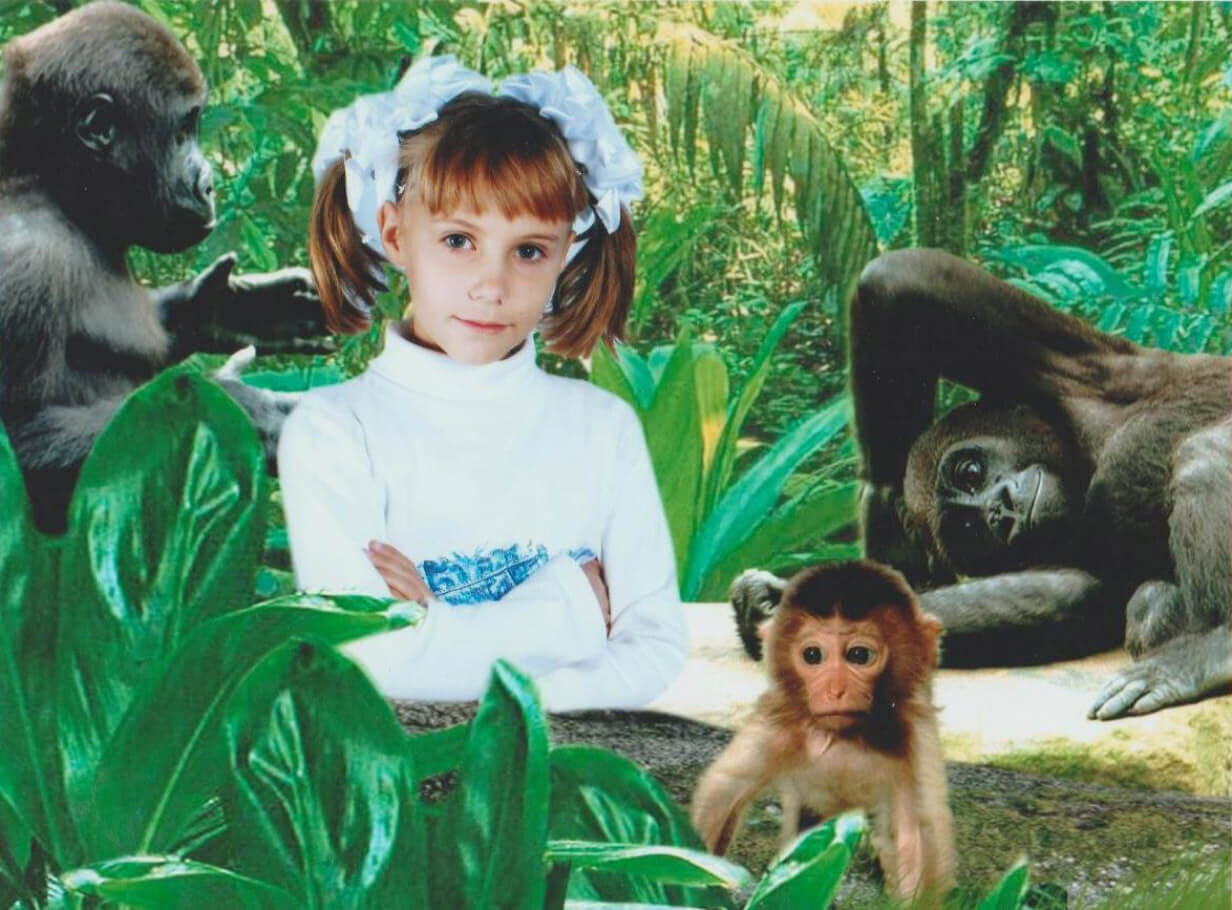Maksym Kozlov
When Barbies and cowboys entered the Soviet Union: The photo series „My beautiful tomorrow“ describes the era when the American dream began to penetrate the territory of the former USSR in the nineties. See the close coexistence of radically different value paradigms unfold before your eyes, collected by @kozlovmaksym.
Where do you live at the moment – and what are you doing there?
I live in Kyiv, Ukraine. I work on the research of an aesthetic theory in an “art based gallery” which has recently opened here. We focus on the post-critical approaches to contemporary art studies. Trying to invent a dialogue-oriented approach to the informal institutions here and cultural studies discourse at all. We try to reassembly the logic of art production. Some of my projects are about experiments with thoughts on this subject.
How does a normal day during Cwovid-19 look like? When do you get up, what do you get for breakfast, where do you go, how do you live and how does it impact what you create?
My gallery is the room next door to my apartment. It's a space in the “neo-baroque” style. It was renovated in the 90s, when the newly imposed rules of the game only started to spread in the new independent state. Some businessman owed a debt to the owners of the apartment and decided to design it this way for them. So when I’m at home - I usually face with the world history of an aesthetic impact.
What gave you the idea to start collecting the 90s pics of kids? What does the series mean to you and what is its message?
When I was visiting my friend in a small town Uman(Cherkasy Oblast) last autumn I noticed some pictures where he was dressed up as “characters” in his room. I instantly decided to tell the story of our common childhood to everybody out there.
I think that contemporary art practices are going to be in the deep crisis. This is due to the fact of the discursive deadlock in which commitment to independent poetry is being replaced by the infinity dialogue process between curator/mentor/art critiс and artist through space with the white walls. An artwork now is beginning with the talks on meanings and only then about the form in which the agreed idea can be implemented. As a consequence of these dialogues, the aesthetics of the native form is burning by the words. We are starting to forget that the form could communicate with us by itself. In some cases it does not need our involvement at all.
These kinds of reflections pushed the situation in which the process of creating archives is becoming the only approach which gives an artist the opportunity to confide in the agency of nature and research from the organic distance.The project “My beautiful tomorrow” grew out of the cultural mise-en-scene. I don't interfere with the photos, I only help them to find each other and becoming described. Becoming a series, in turn, the images begin to tell the important details about my own generation concerning the formation of our psyche and values of us and our parents in (those) times.
It was a curious situation due to the fact that the American dream began to penetrate the territory of the former USSR. It was possible to become an astronaut before, but becoming a glamorous princess or a fighter from Counter Strike was only possible at the end of the 90s. This pluralism of possibilities has created a situation in which two centuries have met within the framework of one phenomenon. And in this project, you can see the close coexistence of radically different value paradigms, captured by dressing up children in these pictures. The princess was replaced by a barbie, and the musketeer by a cowboy. In the Soviet wardrobe tradition, which provided the basis for the first experiments with this market, such characters were not available. The values drama was actually unfolding between this framework: the сostumes are referring more to the past soviet phantasms, and new "digital" characters are more about new capitalism fantasy.
The only thing we should essentially recognise is - we can not destroy the rhythms which were fused with our concept of life in our childhood. There is no chance to stop being a cowboy or princess in the castle instantly. The way which could give us the opportunity to save the planet, do not suffer from neuroses and invent the critical approach to politics is to understand who we were and who we'd become. It could be analyzed using such archives which remain to be created.
How did the collabo between you and wepresent happen?
They emailed me. Probably, they found the archive with “my beautiful tomorrow” on my website.
What will we be seeing next from you – and where?
My recent work is a long-term project dedicated to the comparative analysis of hip-hop culture vibes with the philosophical heritage of the soviet visual researcher Mikhail Lifshitz.
You also are into music I’ve seen: What are your 3 favorite Russian tracks at the moment?
It changes all the time. You could subscribe to my Spotify and just check up what I am listening all time long. Here you go: https://open.spotify.com/user/314kfphqt6a56l35vtcn2rbvezca
If you should describe yourself to an elderly, blind person in 3 sentences – how would you describe yourself?
Some coffee. Some melancholy. And a bit of sunsets.
The future is … (please finish the sentence)
canceled
interview FRANCIS SALVATOR
What to read next






















